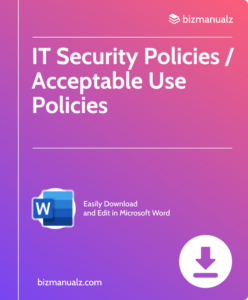CIO Iot Security Measures

Are you concerned about the security of your organization’s Internet of Things (IoT) devices? In today’s digital world, where almost everything is connected, cyber threats have become a major concern for businesses. In this article, we will discuss some important security measures that every CIO should consider implementing to protect their IoT infrastructure. CIO Iot Security Measures.
What Is a CIO?
A CIO, or Chief Information Officer, is a highly ranked executive responsible for overseeing a company’s information technology and computer systems. Their role involves ensuring the reliability and security of the technological infrastructure. Furthermore, CIOs are essential in aligning technology with business objectives and strategies, promoting innovation and efficiency.
To succeed as a CIO, one must possess exceptional leadership abilities, a deep understanding of technology trends, and the capacity to make strategic decisions that benefit the organization.
What Is IoT?
IoT, or Internet of Things, is a term used to describe the network of physical devices that are equipped with sensors, software, and other technologies to connect and exchange data.
These devices can include everyday objects as well as complex industrial tools, all working together to collect and share information. IoT enables automation, improves efficiency, and offers valuable insights into operations in various industries.
Why Is IoT Security Important for CIOs?
It is of utmost importance for CIOs to prioritize IoT security in order to protect sensitive data, prevent unauthorized access, and maintain uninterrupted operations. As the number of interconnected devices increases, so does the risk of cyber threats, making strong security measures essential for CIOs to uphold business continuity and customer trust.
In 2016, a massive DDoS attack was launched by the Mirai botnet, exploiting vulnerable IoT devices. This incident served as a reminder for CIOs worldwide to prioritize IoT security as a top concern.
What Are the Key IoT Security Measures for CIOs?
As the Internet of Things (IoT) continues to expand and revolutionize the way we live and work, it is crucial for CIOs to prioritize the security of these connected devices. In this section, we will discuss the key IoT security measures that every CIO should consider implementing.
From risk assessment and management to employee education and training, each sub-section will cover a crucial aspect of protecting IoT devices and networks. Let’s dive in and explore the essential steps for safeguarding your organization’s IoT infrastructure.
1. Risk Assessment and Management
When conducting risk assessment and management for IoT security, it is important to follow these steps:
- Evaluate potential threats and vulnerabilities in the IoT ecosystem.
- Assess the potential impact of identified risks on business operations.
- Devise risk mitigation strategies and prioritize them based on severity.
- Implement robust security measures to address identified risks.
Pro-tip: Regularly update risk assessment to adapt to evolving IoT security challenges.
2. Network Segmentation
- Segment IoT devices: Group devices based on function and security requirements.
- Implement firewalls: Establish separate network segments for IoT devices with firewalls to control traffic and ensure network segmentation.
- Access control: Enforce strict access controls to limit communication between device groups.
- Monitor traffic: Regularly monitor and analyze network traffic for any unusual patterns or unauthorized access attempts.
3. Strong Authentication and Access Controls
- Strong Authentication and Access Controls are crucial for ensuring IoT security. Implement these measures:
- Use multi-factor authentication to verify user identity.
- Apply role-based access controls to restrict unauthorized access.
- Utilize biometric authentication for enhanced security.
- Implement strong password policies and regularly update passwords.
- A true history of strong authentication and access controls dates back to the 1980s with the development of biometric authentication, which has since been widely adopted for security purposes in various industries.
4. Encryption of Data in Transit and at Rest
To ensure the security of IoT devices, CIOs should prioritize encryption of data in transit and at rest by following these essential steps:
- Implementing robust encryption protocols for data transmission over networks.
- Utilizing encryption methods to secure stored data on IoT devices and servers.
- Regularly updating encryption algorithms to align with industry standards and address vulnerabilities.
Pro-tip: Encrypting IoT data minimizes the risk of unauthorized access and enhances overall security posture.
5. Regular Software Updates and Patches
- Regular software updates and patches are essential for addressing security vulnerabilities and preserving the integrity of IoT systems.
- Implement automated patch management systems to ensure timely application of security updates.
- Schedule regular software updates for all devices and gateways connected to the IoT network.
- Enforce strict version control to prevent the use of outdated software versions that may be susceptible to exploits.
6. Monitoring and Detection of Anomalies
- Employ advanced anomaly detection tools to identify unusual patterns or behaviors in IoT devices and networks.
- Implement continuous monitoring systems to track the performance and behavior of IoT devices in real-time.
- Establish automated alerts and response mechanisms to promptly address any detected anomalies and potential security threats.
- Regularly analyze and review reports on anomaly detection to refine security measures and improve overall system resilience.
It is crucial for CIOs to prioritize proactive monitoring and detection of anomalies to safeguard IoT infrastructure from potential security breaches and vulnerabilities.
7. Employee Education and Training
Employee education and training are crucial in fortifying an organization’s defense against IoT-related vulnerabilities. By fostering a culture of vigilance and knowledge, employees become active participants in safeguarding sensitive data and infrastructure. This is why Employee Education and Training is such an important aspect of IoT security.
- Regularly conduct workshops and training sessions on IoT security protocols and best practices for Employee Education and Training.
- Provide resources and materials to educate employees about potential security risks associated with IoT devices.
- Offer simulated phishing drills and real-world scenario exercises to enhance employee awareness and response.
- Encourage employees to stay informed about the latest IoT security developments through newsletters, webinars, and online courses.
- Implement a rewards program to recognize employees who demonstrate exemplary understanding and compliance with IoT security measures.
What Are Some Examples of Successful IoT Security Implementations by CIOs?
As the Internet of Things (IoT) continues to revolutionize the way we interact with technology, security becomes a top priority for Chief Information Officers (CIOs). In this section, we will take a closer look at some successful examples of IoT security implementations by CIOs.
From Google’s Nest Secure system to Amazon’s Ring Doorbell and Microsoft’s Azure Sphere, we’ll explore how these companies have effectively integrated IoT security measures to protect their devices and users. By examining these case studies, we can gain valuable insights into the best practices for securing IoT devices.
1. Google’s Nest Secure System
- The comprehensive Google’s Nest Secure System provides a comprehensive security solution for IoT devices in both homes and businesses.
- It effectively integrates motion and open/close sensors, video surveillance, and user-friendly mobile app controls.
- The system prioritizes data privacy and protection against unauthorized access by utilizing encrypted communication.
- Regular software updates are consistently provided to address any emerging security threats and vulnerabilities.
- Google’s Nest Secure System serves as a prime example of successful implementation of robust IoT security measures.
2. Amazon’s Ring Doorbell
Amazon’s Ring Doorbell is a highly sought-after IoT device that combines the functionality of a doorbell with a security camera. It enables homeowners to remotely view and communicate with visitors through a smartphone app.
With features such as motion detection, night vision, and cloud video storage, this device enhances home security. By incorporating Ring Doorbell into their IoT security strategies, CIOs can strengthen physical security measures and have access to real-time monitoring capabilities.
3. Microsoft’s Azure Sphere
In 2018, Microsoft introduced their comprehensive IoT security solution, Azure Sphere, which includes a secured operating system, a custom microcontroller, and cloud security. This solution aims to provide a secure foundation for connected devices and address the growing concerns about IoT device security.
What Are the Challenges Faced by CIOs in Implementing IoT Security Measures?
CIOs face numerous challenges when it comes to implementing security measures for IoT, including:
- Complexity: The management of various IoT devices and platforms can make security protocols more complex.
- Scalability: As the network of IoT devices continues to grow, adapting security measures can be a challenge.
- Interoperability: Ensuring that security solutions can seamlessly integrate with different IoT systems can be difficult.
- Data Protection: Robust security measures are necessary to safeguard sensitive IoT data from breaches and unauthorized access.
Frequently Asked Questions

What is a CIO?
A CIO, or Chief Information Officer, is a senior executive who oversees the information technology (IT) systems and strategy for a company or organization.
What is the role of a CIO in implementing IOT security measures?
The role of a CIO in implementing IOT security measures is to ensure that all devices and systems connected to the internet are secure and protected from potential cyber threats. This includes creating and implementing policies, procedures, and protocols for securing IOT devices.
What are some common IOT security risks that a CIO should be aware of?
Some common IOT security risks include data breaches, unauthorized access, and malware attacks. These risks can lead to significant financial and reputational damage for companies.
How can a CIO ensure the security of IOT devices?
A CIO can ensure the security of IOT devices by implementing strong passwords, regularly updating software and firmware, and using encryption to protect sensitive data. They can also conduct regular security audits and risk assessments.
What measures can a CIO take to prevent IOT security breaches?
To prevent IOT security breaches, a CIO can implement firewalls, intrusion detection systems, and access controls. They can also educate employees on best practices for using IOT devices and regularly monitor network activity for any suspicious behavior.
How can a CIO stay updated on the latest IOT security measures and threats?
A CIO can stay updated by attending conferences and seminars, networking with other IT professionals, and staying informed through industry publications and online resources. They can also work with IT security experts to stay ahead of emerging threats.
















Leave a Reply